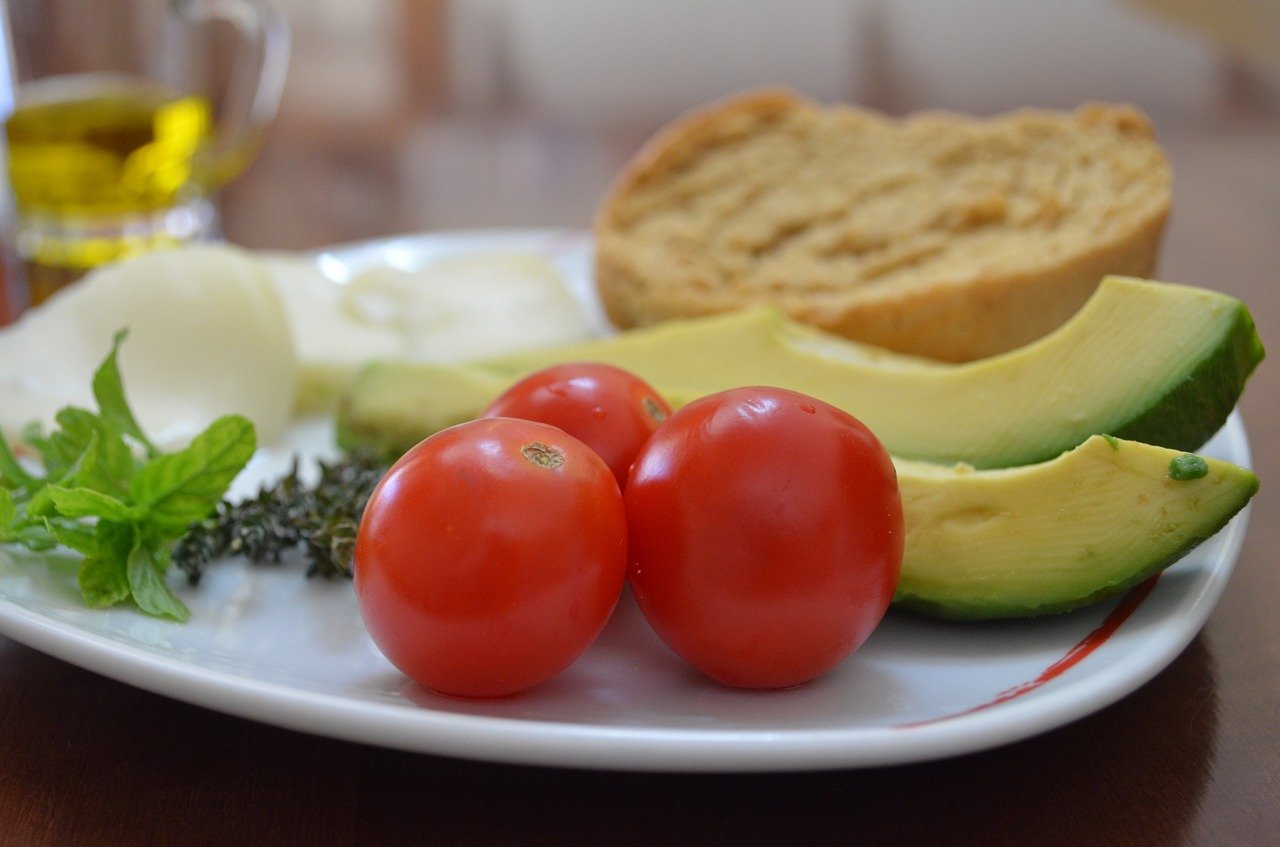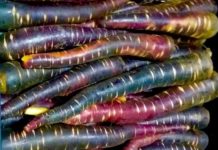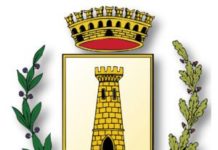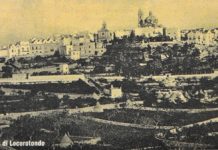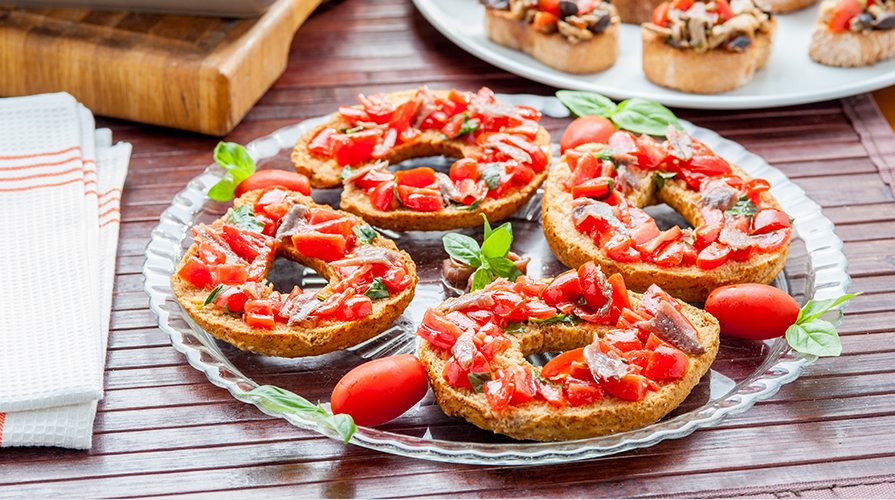
Apulian frisella. What is the frisella and its origins
Apulian frisella also known as frisa is a durum wheat product made with the same recipe as bread only that it after the first baking is cut in half and placed back in the oven to give it that crispiness we all know. At the end of the second baking we will get a very dehydrated product with one side firm and one side porous. Frisa perfectly reflects what is called for in the Mediterranean diet, in that all you need to eat it is water, salt, oil, tomato and oregano.
Today friselle have become “enriched,” in addition to the traditional ones, one can find friselle made of durum wheat, barley, and whole wheat flour.
Their preparation is the same with all flours: cylinders of dough are shaped, which are closed in the shape of a doughnut; after partial baking in a wood-fired oven, the loaves, still warm, are sectioned with a string into rough discs with an irregular surface; finally, the friselle are baked again, at a lower temperature than before, for the biscuit stage.
The name and history of friselle
Its origins date back to the 10th century, frisa was the food that nourished sailors and mariners during their long sea voyages; they would let them soften in seawater and then season them with oil salt and tomato.
It is said, however, that its origins predate the 10th century, in fact it seems that friselle were already present 3,000 years ago among the Phoenician people.
The history of frisella has ancient origins and evidence of it can be found as far back as 1300. There are scholars’ theses on the name, but the most credible one leads back to the Latin word “frendere” meaning “to grind, to shred”: frisella, once softened in water, can in fact be shredded into small pieces.
Before the postwar period, frisella made of wheat flour was reserved only for the wealthy classes, while the less wealthy classes consumed frisella made of barley flour or mixtures of barley and wheat. However, the frisella originated as a poor food, as it was inexpensive, and spread mainly in the peasant world because of the need of workers to have a product with a long natural shelf life. The hardness of frisella makes it resistant to time until tasting, when it must be softened by sponging it with water. Sailors used to stock up on it to have it always ready on long voyages when they stayed away from home, and to make it edible and tastier they used to soak it with sea water.
The shape of the friselle is also due to practical needs: friselle were strung on a string whose ends were knotted like a necklace, so that it was easy to hang for more convenient transportation.
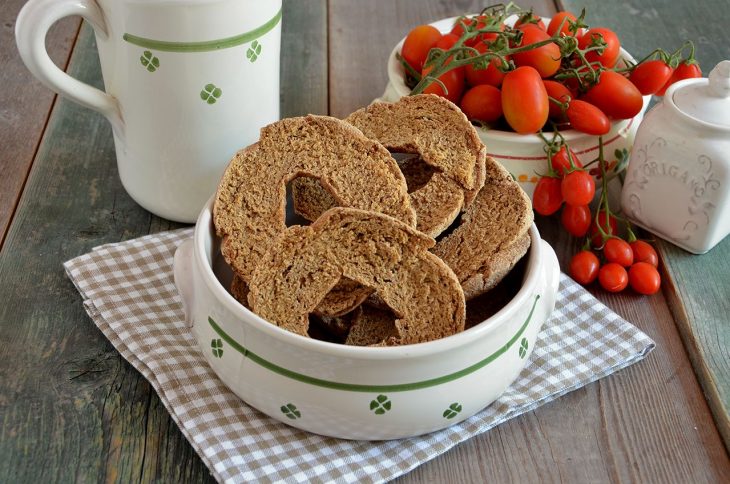

Friselle in Italy: Apulia
Typical of southern Italy, friselle boasts a great tradition especially in Puglia, Campania and Calabria, where it is accompanied by typical products such as olives, oregano, olive oil and tomatoes in its many colorful regional variations. Even two great Neapolitan poets such as Salvatore Di Giacomo and Ferdinando Russo dedicated verses to the frisella and it is still very popular today, representing, especially in summer, a light and fresh food that is ideal to put on the table, being low in fat.
Apulia: frisella is the bread of crusaders
Frisella is produced mainly in Apulia, where it is also known as the “bread of the Crusaders,” having been one of the victuals of the Christian troops traveling to the Holy Land. Now, it is served on summer tables as an appetizer or a main course. To season a frisella “alla pugliese,” you will first need to soak the frisa with water: you choose whether you want it crispy or softer, and based on that let it soak for about 30 seconds to a minute. Next, arrange them on the plate and season them, in order, with oil, salt, cherry tomatoes cut into small pieces and lightly pressed to get the seeds out. Lastly, add the oregano. In a few moments you will have a healthy and nutritious frisella ready. At your pleasure, you can also add typical cheese and tuna.



